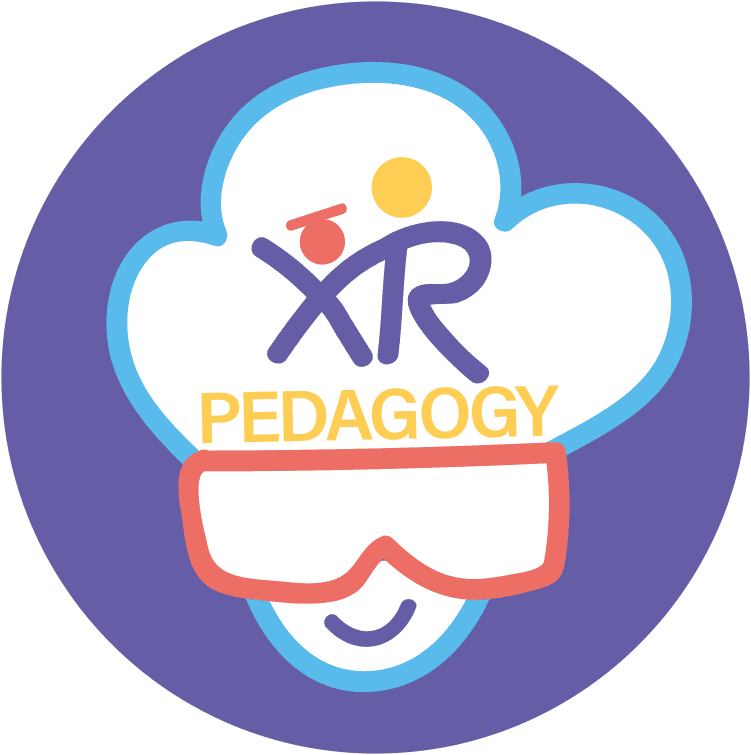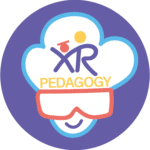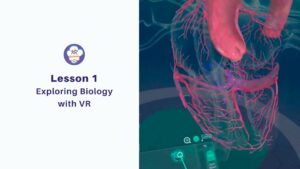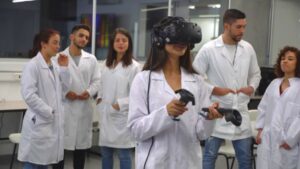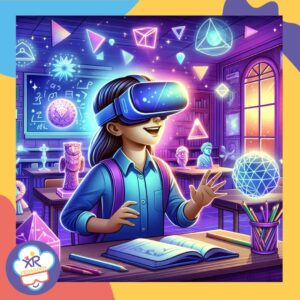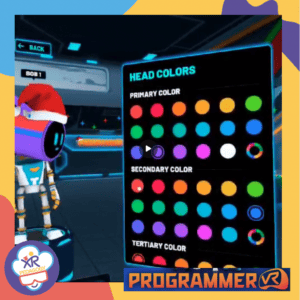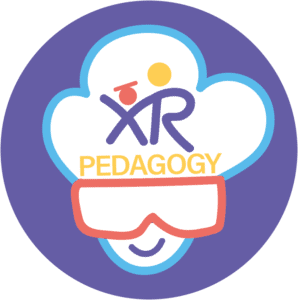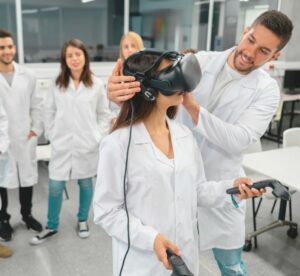Mixed Reality (MR) represents a fascinating technological advancement in which the digital and physical worlds combine to create immersive and interactive experiences. By overlaying virtual elements onto our real environment, MR adds a new dimension to how we perceive and interact with the world. Mixed Reality distinguishes itself from Augmented Reality (AR) in that while AR allows the overlay of a virtual object in the real world, MR provides a means to incorporate the entire body with real and virtual elements. In a Mixed Reality environment, the user can ‘see’ the virtual/digital overlay of the object and physically or mentally interact with and/or manipulate it. This capability is particularly promising in the field of education, where the possibilities for enriched and personalized learning can radically transform traditional pedagogical practices. This article explores how the integration of Mixed Reality can transform learning.
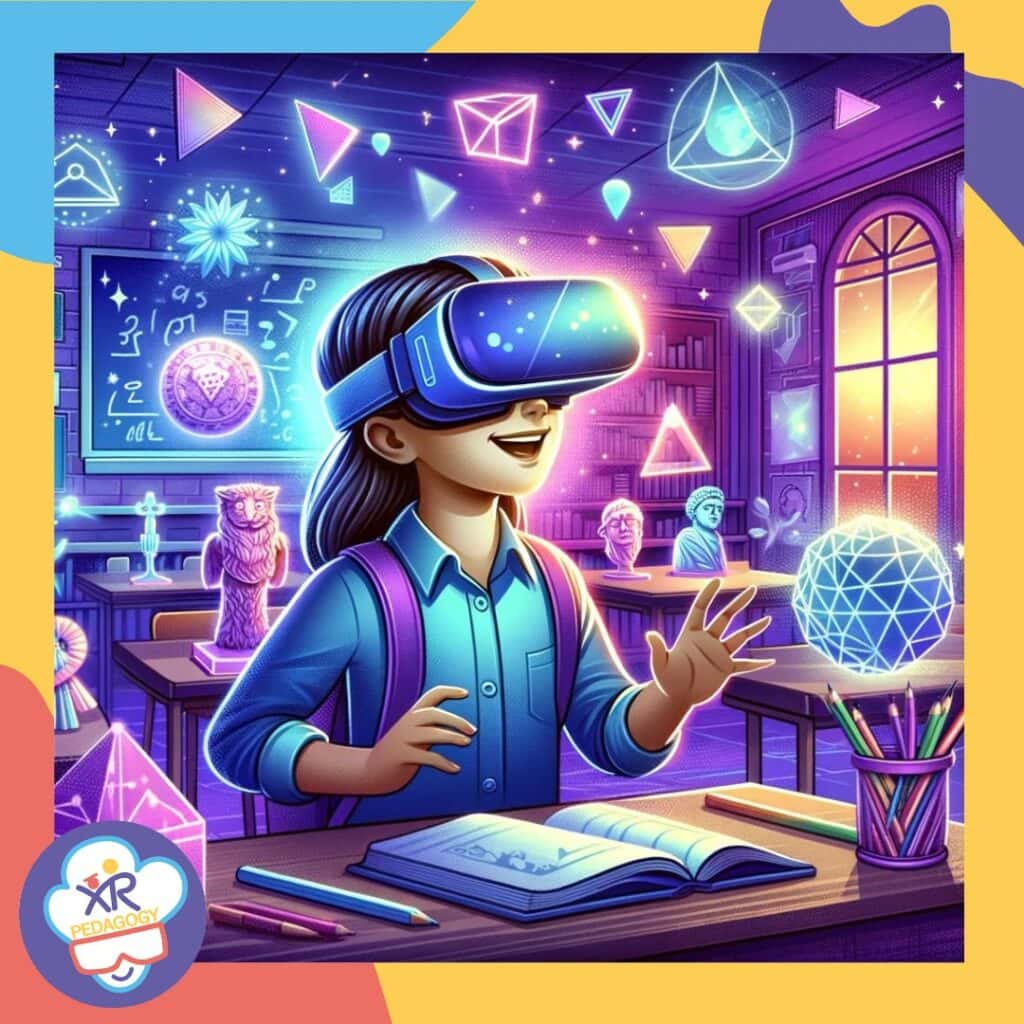
1. Increased Immersion and Engagement in Mixed Reality
One of the most significant benefits of Mixed Reality is its ability to immerse students in deeply interactive learning environments, thus transforming abstract concepts into concrete and captivating experiences. By integrating virtual elements directly into the learner’s physical environment, MR allows for complete immersion, which can significantly increase engagement and motivation. Engagement refers to the extent to which a learner applies a level of attention and curiosity to a situation to achieve a desirable result. For instance, in science classes, students can explore atomic structures or ecosystems in 3D, interacting with elements to understand their composition and functionality better. In history, imagine students virtually walking through the streets of ancient Rome, with each building or monument narrating its story as they explore. These simulations are not limited to academic subjects; they extend to professional training, where, for example, a future mechanic could practice repairing an engine in a safe and controlled environment, thus facilitating practical learning without the risks associated with real equipment.
2. Personalization of Learning
Mixed Reality opens promising horizons in the personalization of learning, allowing for precise adaptation to the individual needs of each student. This advanced technology can analyze students’ interactions with virtual content in real-time, thus enabling teachers to collect valuable data on their progress and difficulties. For example, if a student struggles with a physics problem, MR can adjust the difficulty of tasks or provide additional tutorials to reinforce understanding. This individualized approach helps maintain student engagement at optimal levels by avoiding frustration and maximizing learning opportunities. Additionally, Mixed Reality can offer diversified learning paths where students can choose activities that match their interests, thus enhancing their motivation and personal investment in their education.
3. Enhanced Collaboration and Communication
Mixed Reality also transforms communication and collaboration in education, enabling students to work together more effectively, even when they are physically apart. Thanks to shared virtual environments, students can interact in real-time, as if they were side by side, which promotes smoother idea exchange and increased cooperation. For instance, in a science project, students from different schools can collaborate on a virtual experiment, sharing results and observations without distance barriers. Furthermore, some research has shown that students using MR are more likely to engage in discussions and share their opinions than those in control groups. For example, in an earth science learning environment using Mixed Reality, Birchfield and Megowan-Romanowicz (2009) observed that at-risk ninth-grade students communicated 35% more often, led discussions, and interacted more with their teachers and peers than what occurred in traditional classroom teaching.
This extended capability for collaboration and communication is particularly valuable in fields such as engineering or architecture, where groups of students can together design, build, and test structures in a common virtual space, receiving instant feedback from professors or peers. These improved interactions strengthen students’ social and professional skills and open the door to forms of previously inaccessible cooperative learning.
4. Accessibility and Inclusion
Mixed Reality has exceptional potential to make education more accessible and inclusive for students with specific needs. By adapting learning environments to individual abilities, this technology can, for example, transform educational content for visually impaired or hearing-impaired students. Students with visual impairments can receive enriched audio information or tactile cues through connected devices, while those with hearing difficulties can benefit from automatic subtitles and visual animations that accompany lessons in real-time. Additionally, MR can be customized to meet the needs of students with learning disabilities, providing them with visual prompts or adapted activity sequences that facilitate understanding and retention. Thus, Mixed Reality not only enhances the educational experience for these students but also offers them an equal opportunity to participate and succeed in a learning framework that might have been previously unsuitable for their needs.
5. Challenges and Considerations
Integrating mixed reality in education presents several significant challenges.
- Cost: The expense of the necessary technologies can be prohibitive for many institutions, thus limiting access to innovative education.
- Training: Teacher training represents another major obstacle: educators must not only master mixed reality tools but also know how to effectively integrate them into their teaching practices.
- Security: Data security and privacy concerns are also critical, as the increased use of immersive technologies raises questions about protecting students’ personal information.
To overcome these challenges, it is essential for policymakers and educational institutions to work collaboratively with technology developers to create affordable, accessible, and secure solutions while ensuring adequate teacher training. This approach will not only maximize the benefits of mixed reality but also ensure a smooth transition to more advanced teaching methods.
Conclusion
In conclusion, mixed reality offers revolutionary possibilities for education, capable of radically transforming the way knowledge is acquired and shared. Through its power of immersion, personalization, and enhanced collaboration, it presents an unprecedented opportunity to make learning more dynamic, inclusive, and accessible to all students, regardless of their abilities or geographical situations. However, to fully realize this potential, it is crucial to address the associated challenges, particularly regarding costs, teacher training, and data security. By committing to thoughtful and responsible integration of mixed reality, the education sector can not only enrich the educational experience but also prepare students to succeed in an increasingly digitized world. The future of education can be radically improved through mixed reality, and it is up to us to seize this opportunity to shape a well-equipped and inspired future generation.
Join the learning revolution!
We invite educators, policymakers, and technologists to explore the transformative potential of mixed reality. Engage in testing, implementing, and sharing your experiences with this pioneering technology. Whether you are a teacher eager to incorporate MR elements into your classroom, a developer passionate about creating immersive educational applications, or a policymaker able to facilitate supportive policies for the adoption of these technologies, your contribution is crucial. Together, we can build an educational future that not only excites and engages students but also prepares them to excel in an interconnected world. Share your ideas, challenges, and successes on our XR Pedagogy platform and participate in a growing community that is shaping the future of education.
